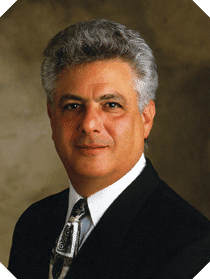For a short time, anyway, I felt like I was at the center of the
gear universe.
Creating and maintaining contacts like these helps us continue
to fulfill our role as “The Gear Industry’s Information
Source.”
Another way we build on that role is by continuing to expand
our information offerings to you, the gear community. At Gear
Expo, we did so by presenting the first ever live and in-person
sessions of “Ask the Expert.” At our booth, we hosted four sessions,
with three or four renowned experts in each session. The
topics were “gear grinding,” “cutting tools,” “gear design” and
“ask anything.”
Some of the foremost authorities in the world were among
our experts during the live sessions, and they attracted a crowd
to our booth throughout the show. Even though I’ve been in
the gear manufacturing industry for more than 50 years, I was
delighted by the expertise of the presenters and the sophistication
and depth of their responses. Many of our panelists are
only available during a show like this on a very limited basis,
often only to the largest of customers. To have them all together
and be available to the industry at large was truly a first in our
industry. Please see the article on page 92 for a rundown of the
sessions, including the names and titles of the panelists, the
questions asked and where to go online to view each of the video-
recorded sessions.
The excitement we carried back home from Gear Expo was
about more than just our own experiences at the show. Even
outside our own activities, it was one of the best shows in recent
memories. Foot traffic was good, and many exhibitors reported
that the attendees came to the show with specific requirements,
and orders were received. We heard similar reports out of EMO
in September. So the anecdotal evidence, at least, points to a
reasonably healthy gear industry for the immediate future.
The empirical evidence might be a little more mixed, as you’ll
see in our annual State of the Gear Industry survey results (page
26). As many of you are aware, there are major segments of the
gear manufacturing community — namely mining and energy
— that are less than robust, while others — like automobiles
and aircraft — are rolling along like a precision ground gear.
According to the survey results, the American gear industry
seems to be in decent shape, with the overall level of optimism
about the same as last year.
But there are pockets of trouble, to be sure. In particular, our
respondents outside North America were decidedly more pessimistic
this year, and many respondents continue to express concerns
about the difficulty in finding skilled labor.
We’ll continue to do our part by continuing to provide as
much educational material as possible, in as many formats as
we’re able. How can you help assure this information keeps flowing
to you and your associates? You can do your part by renewing
your free subscription. Just visit www.geartechnology.com and
click on “Subscribe” in the upper-left corner, and encourage all of
the young and new people in your organization to do the same.
Make sure they’re aware that more than 31 years of gear-related
education is available on our site for free, including our very popular
“Back to Basics” series we ran in our first five years, explaining
the mechanical interrelationships of tools and machines. Just
type “basics” in the search bar to get a good start.

About Author
Michael Goldstein, Publisher & Editor-in-Chief,
began his career in the gear industry in 1964,
when he joined his father at Cadillac Machinery
Co., Inc. As a machine tool dealer specializing in
Gleason bevel gear machines, Michael rose to
prominence in the industry, with leadership roles
in the Machinery Dealers National Association
(MDNA), as well as the European Association of
Machine Tool Merchants (EAMTM). He founded
Gear Technology in 1984, and has been involved
with the American Gear Manufacturers Association
(AGMA) throughout his career. [50 years in the gear
industry]








